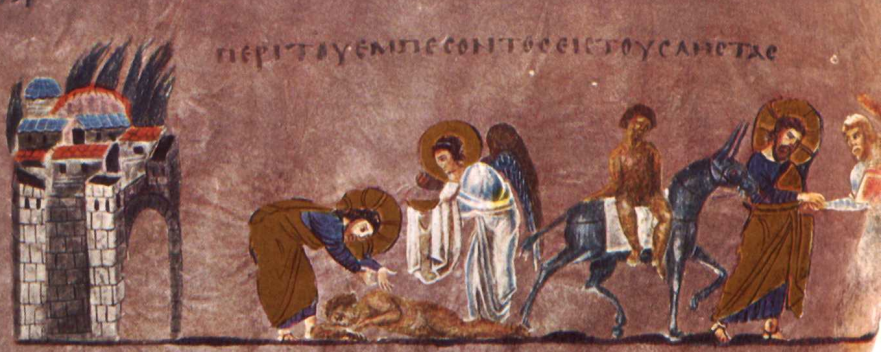The Good Samaritan (Luke 10:25-37) is perhaps one of the most well-known of Jesus’ parables. The origin of the parable derives from an exchange between Jesus and an expert in the Law. The scribe asked Jesus, “What shall I do to inherit eternal life?” Jesus responded to his question in a very Jewish manner with another question, asking the scribe to summarize the Law. The scribe responded by quoting Deuteronomy 6:5, “You shall love the Lord your God, with all your heart, and with all your soul…” and Leviticus 19:18, “and your neighbor as yourself.”
Deuteronomy 6:5 and Leviticus 19:18 are two of three passages within the Old Testament that begin with the phrase וְאָהַבְתָּ (ve’āhavtā; “and you will love”). Jewish interpreters, like Jesus and Paul, connected biblical passages due to shared language between the two verses. The hermeneutical method was known as gezerah shevah. Language, not theology, drove the hermeneutic. Ancient Jewish interpreters assumed that God, who inspired the biblical writers, intended connections between passages that had shared vocabulary even if the passages came from different books. In their handling of Scripture, when they found passages that had shared vocabulary, language drove the hermeneutical method and by bringing the passages together the theological idea was birthed. Quite often, one passage was viewed as esoteric or abstract and the other passage provided a tangible, practical way to interpret the first passage. Loving God with all one’s heart, soul, and strength is abstract. Ancient Jewish interpreters would understand that the shared language between Deuteronomy 6:5 and Leviticus 19:18 pointed to Leviticus 19:18—“Love your neighbor who is like yourself”—providing a tangible, practical way one loved God: by loving the one created in God’s image (see Gen. 1:27). The second passage interprets the first.
Paid Content
Premium Members and Friends of JP must be logged in to access this content: Login
If you do not have a paid subscription, please consider registering as a Premium Member starting at $10/month (paid monthly) or only $5/month (paid annually): Register
One Time Purchase Rather Than Membership
Rather than purchasing a membership subscription, you may purchase access to this single page for $1.99 USD. To purchase access we strongly encourage users to first register for a free account with JP (Register), which will make the process of accessing your purchase much simpler. Once you have registered you may login and purchase access to this page at this link:

This article is just one chapter of Marc Turnage’s, Windows into the Bible: Cultural and Historical Insights into the Bible for Modern Readers (Springfield, Mo.: Logion, 2016). If you enjoyed this chapter, be sure to check out the entire book!
































































































Comments 1
Updated with a new video on the Good Samaritan Parable by Marc Turnage. Check it out!